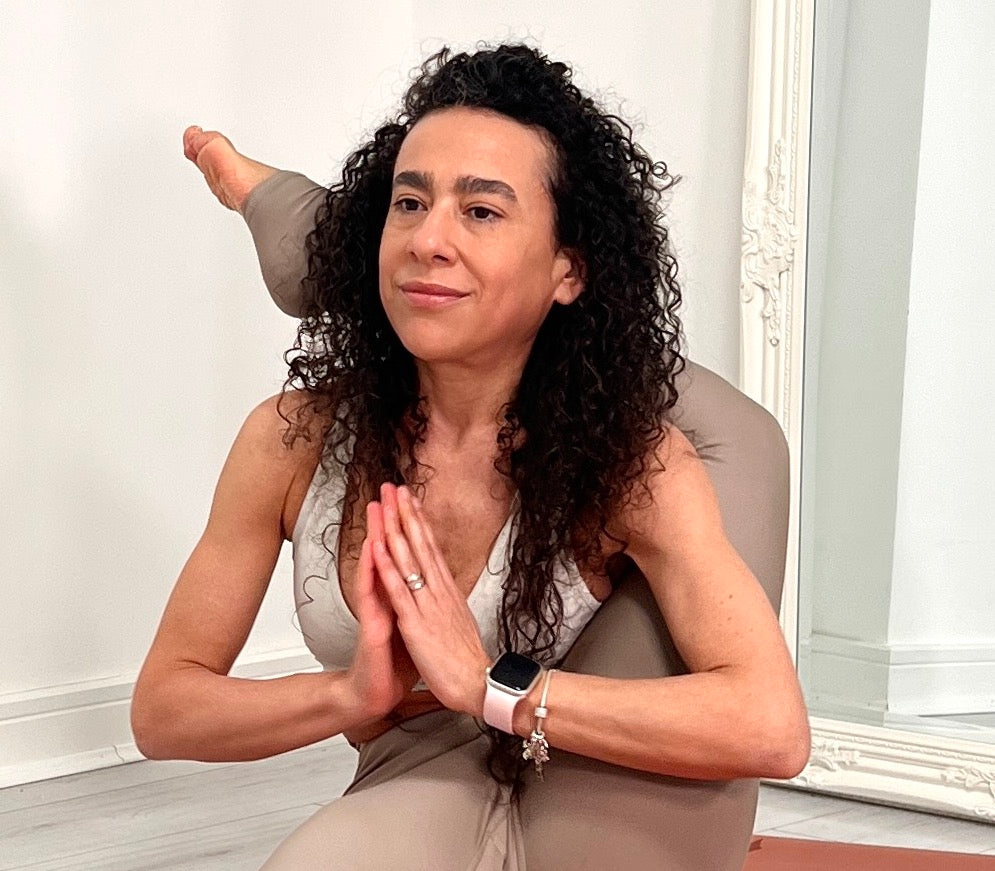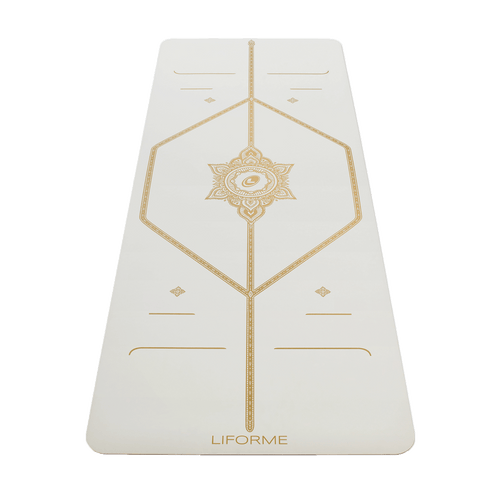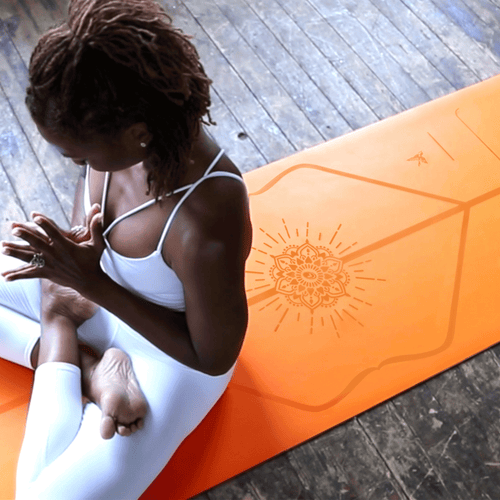Diese Phasen können anspruchsvoll sein, aber ich habe festgestellt, dass Yoga ein freundlicher Verbündeter ist, immer da, wenn ich einen ruhigen Ort für mich selbst brauche. Sogar jetzt, in meinen späten 40ern, finde ich, als ich mit Perimenopause ausgesetzt bin, regelmäßig Trost auf meiner Matte. Yoga hilft mir, körperliche Beschwerden zu erleichtern, meine Stimmung zu stabilisieren und die emotionale Balance zu fördern.
Was ist Perimenopause?
Perimenopause ist eine natürliche und dennoch herausfordernde Lebensphase. Es ist der Übergang vor der Wechseljahre, in der der Körper einer Frau nach und nach weniger Östrogen produziert. Diese Phase kann einige Jahre vor den Wechseljahren beginnen und ist durch Symptome wie unregelmäßige Menstruationszyklen, Hitzewallungen, Stimmungsschwankungen, Schlafstörungen und Veränderungen der Libido gekennzeichnet. Die Perimenopause beginnt normalerweise in den 40ern einer Frau, kann aber bereits Ende 20 beginnen. Es dauert bis zur Wechseljahre, die durch 12 aufeinanderfolgende Monate ohne Menstruation definiert ist.

Was Yoga für Sie tun kann
Yoga bietet eine sanfte und effektive Möglichkeit, diese Veränderungen zu navigieren und sowohl körperliche Erleichterung als auch emotionalen Komfort zu bieten. Durch die regelmäßige Praxis können wir Kraft, Gleichgewicht und ein erneutes Selbstgefühl finden und diese Zeit in eine Zeit des Wachstums und der Selbstfindung verwandeln. Für mich sind die schwierigsten Aspekte der Perimenopause die Nachtschweiß und Stimmungsschwankungen. Es gab Momente, in denen ich mich am Rande der Tränen gefühlt habe oder schreien wollte, aber auf meine Matte treten und eine halten wollte Kopfstand war unglaublich beruhigend.
Yoga für Perimenopause Symptome
Diese Yoga -Posen und -Techniken haben mir geholfen, einige der Symptome von Perimenopause zu bewältigen:

1. Hormone ausbalancieren: Posen wie die unterstützte Brücke (Setu Bandhasana) und Legs-up-the-Wall (Viparita Karani) Helfen Sie Hormonen, die Hormone zu regulieren, indem Sie das endokrine System stimulieren, das Symptome wie Stimmungsschwankungen, Müdigkeit und Stress lindern kann.
2. Reduzierung der Hitzewallungen: Kühlatem (Sheetali Pranayama) beruhigt das Nervensystem und verringert die Intensität und Häufigkeit von Hitzewallungen. Ich benutze diese Technik, um Nachtschweiß zu verwalten, besonders wenn ich schweißgebadet aufwache.

3. Stimmung verbessern: Achtsamkeit und Entspannungspraktiken, wie z. Kinderpose (Balasana) Und Leiche Pose (Savasana), hilft, Stress zu reduzieren und die Stimmung zu erhöhen.
4. Schlafen verbessern: Sanfte Yoga und tiefe Entspannungstechniken wie Yoga Nidra, Fördert besserer Schlaf und Kampflosigkeit. Yoga Nidra, eine liegende Meditationstechnik, trägt dazu bei, einen tiefen Entspannungszustand zu erzielen, insbesondere in der vormenstruellen Phase, wenn Hormone schwanken.

5. Fitness aufrechterhalten: Dynamische Sequenzen wie Sonnengrüßungen (Surya Namaskar) Halten Sie den Körper stark und flexibel und entgegenwirken physischen Veränderungen.
Veränderung mit Yoga umarmen
Yoga bietet ein Zufluchtsort und bietet Gleichgewicht und Frieden inmitten des Sturms der Perimenopause. Die tiefen Atem- und Achtsamkeitspraktiken, die Yoga innewohnt, helfen, meinen Geist zu beruhigen, Angstzustände zu verringern und Stimmungsschwankungen zu stabilisieren. An Tagen, an denen sich emotionale Turbulenzen überwältigend anfühlt, ermöglicht es mir die Zeit, die ich auf meiner Matte verbracht habe, wieder mit meinem inneren Selbst zu verbinden und Klarheit und Frieden zu bringen.
Denken Sie daran, Yoga ist ein unterstützendes Werkzeug, kein Heilmittel. Wenn Ihre Symptome schwerwiegend sind, wenden Sie sich an Ihren Hausarzt oder suchen Sie einen Spezialisten, der Sie durch diese Änderungen führen kann. Die Zusammenarbeit mit älteren Frauen, die diese Symptome erfahren haben, kann auch wertvolle Erkenntnisse liefern. Sie sind nicht allein.





































